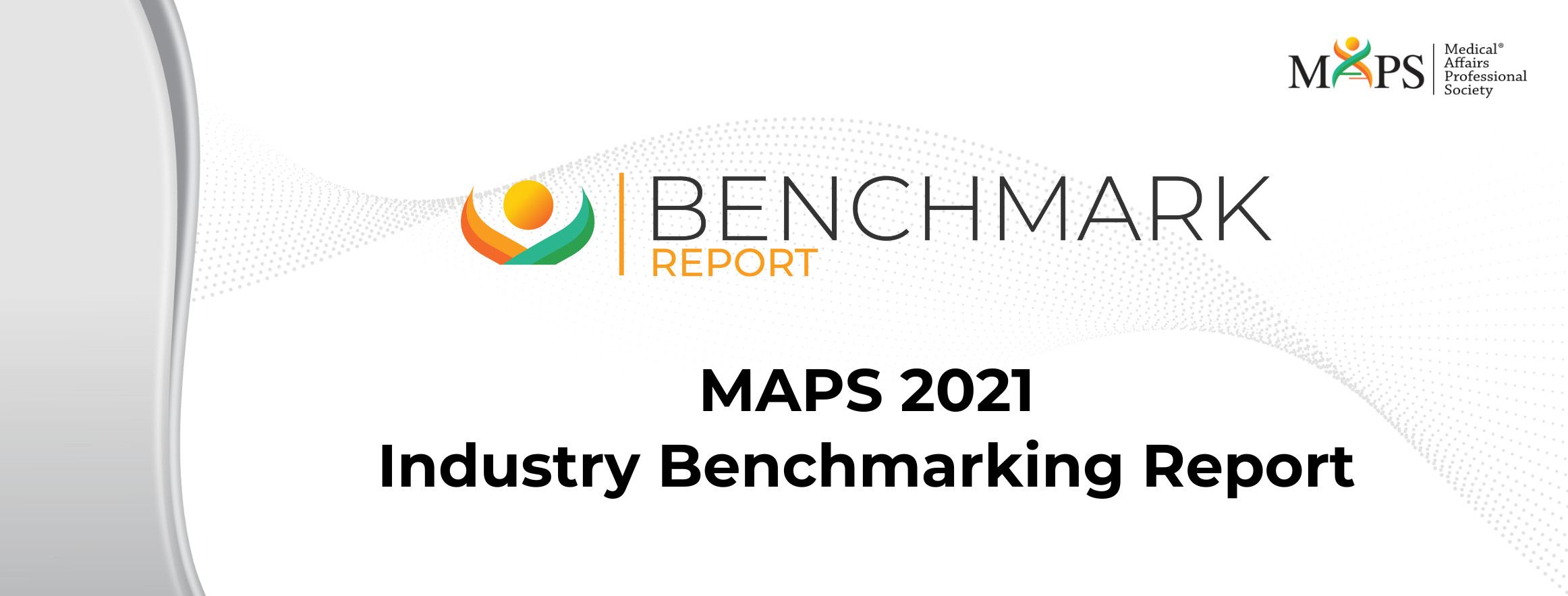Introduction
The Medical Affairs Professional Society (MAPS) is pleased to share our October 2021 Benchmarking Report. This Report is based on findings from 21 leading organizations representing the Pharmaceutical, Biotech, and Medical and Diagnostic Device sectors regarding their organizational structure, budget, and operations.
Survey Design: MAPS’ Ambassador Alliance, representing 19 of the 25 Industry Partner organizations to MAPS, brainstormed the Benchmarking topic. A small group of IPP Ambassadors then met to finalize the survey questions. MAPS would like to thank the following IPP Ambassadors for their time and contributions:
Jaime Blais, Head of Medical and Healthcare Excellence, Janssen
Søren Buur, Director, Head of Medical Affairs Operations, Lundbeck
Deena Goldman, Vice President, Medical Communications (former)
Karen Jursca, Director, Operational Excellence, Teva
Survey Analysis: MAPS would like to thank Tim Mikhelashvili, CEO & Co- Founder, Amedea Pharma, Inc. for developing the data analysis of the survey results.
Respondents: MAPS selected one representative from 45 organizations including 15 Biotech companies, 16 Medical & Diagnostic Device companies, and 14 Pharmaceutical companies. Of the 45 representatives invited to participate, 21 respondents completed the survey. All responses were anonymous, meaning the self-reported industry type reflected in the baseline data overview may not align with the breakdown of the invitees (14 Pharma, 15 Biotech, 16 Medical & Diagnostic Device).
Companies invited to participate:
Alexion, Amgen, Apellis, BioMarin, CSL Behring, Incyte, Ipsen, Jazz Pharmaceuticals, Lundbeck, Novo Nordisk, Regeneron, Sage Therapeutics, UCB, United Therapeutics, Vertex, Abbott, Baxter International, Becton Dickinson, Cardinal Health, Edwards Lifesciences, Fresenius, Haemonetics, J&J Med Device, Leica Biosystems, Medtronic, Novocure, Philips, Siemens, Stryker, Thermo Fisher Scientific, Varian, AbbVie, Astellas, AstraZeneca, BMS, Eisai, GSK, Janssen, Kyowa Kirin, Lilly, Otsuka, Pfizer, Sanofi, Takeda, Teva



